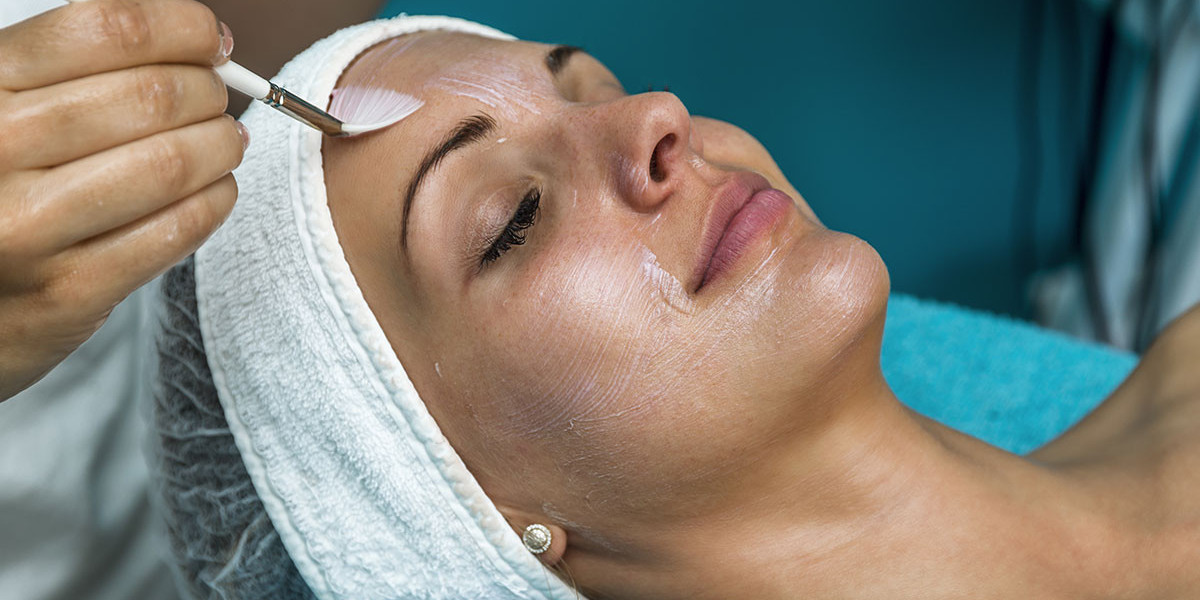Chemical peels have become a popular skincare treatment for individuals seeking to enhance their skin's appearance and texture. This procedure involves applying a chemical solution to the skin to remove damaged outer layers, revealing smoother, brighter skin underneath. Whether addressing acne scars, uneven pigmentation, or signs of aging, chemical peels can offer significant improvements.
What Are Chemical Peels?
Chemical peels are cosmetic treatments that involve applying a solution to the skin to exfoliate and remove the outer layers. This process stimulates the skin's natural healing response, encouraging the growth of new, healthy skin cells. Chemical peels can be tailored to target specific skin concerns, such as fine lines, wrinkles, acne scars, and hyperpigmentation.
Types of Chemical Peels
Chemical peels are categorized based on their depth of penetration and the types of acids used. The three primary types of chemical peels are:
- Superficial Peels
Also known as light peels, superficial peels target the outermost layer of the skin (the epidermis). They use mild acids, such as alpha-hydroxy acids (AHAs) or beta-hydroxy acids (BHAs), to gently exfoliate and improve skin texture. Superficial peels are often used to address minor skin concerns like dullness, dryness, or mild acne. They require minimal downtime and are suitable for all skin types. - Medium Peels
Medium peels penetrate deeper into the skin, reaching the middle layer (the dermis). These peels use stronger acids, such as trichloroacetic acid (TCA), to treat more significant skin issues, including moderate sun damage, fine lines, and uneven pigmentation. Medium peels offer more noticeable results compared to superficial peels but may involve a longer recovery period. - Deep Peels
Deep peels penetrate the deeper layers of the skin, targeting the dermis. They typically use powerful acids, such as phenol, to address severe skin concerns like deep wrinkles, significant sun damage, and extensive pigmentation issues. Deep peels provide dramatic results but require a more extended recovery period and may involve more significant risks.
Benefits of Chemical Peels
Chemical peels offer a range of benefits for different skin concerns, including:
- Improved Skin Texture
By removing damaged outer layers, chemical peels reveal smoother, more even skin. This can help reduce the appearance of rough patches, acne scars, and textural irregularities. - Reduced Fine Lines and Wrinkles
Chemical peels stimulate collagen production, which can help diminish the appearance of fine lines and wrinkles, leading to a more youthful complexion. - Enhanced Skin Tone
Chemical peels can address uneven pigmentation, such as age spots, sun spots, and melasma, resulting in a more uniform skin tone. - Treatment of Acne and Acne Scars
Peels with salicylic acid or glycolic acid can help unclog pores, reduce inflammation, and improve the appearance of acne scars. - Brightened Complexion
Chemical peels can exfoliate dull, dead skin cells, revealing a brighter and more radiant complexion. - Reduction of Sun Damage
Peels can help repair skin damaged by sun exposure, reducing the appearance of sunspots and improving overall skin health.
Risks and Side Effects
While chemical peels are generally safe, they can come with risks and side effects, particularly for those with sensitive skin or pre-existing skin conditions. Potential risks include:
- Redness and Swelling
Some degree of redness and swelling is common after a chemical peel, especially with medium and deep peels. This usually subsides within a few days. - Peeling and Flaking
As the skin sheds its outer layers, peeling and flaking are expected. This is a normal part of the healing process but may be more pronounced with deeper peels. - Hyperpigmentation
In rare cases, chemical peels can cause darkening of the skin, particularly in individuals with darker skin tones. This risk can be minimized with proper post-peel care. - Infection
Although rare, there is a risk of infection if proper hygiene and aftercare guidelines are not followed. - Scarring
Deep peels carry a higher risk of scarring, especially if the skin is not properly cared for during the healing process.
Post-Peel Care and Recovery
Proper post-peel care is essential for achieving optimal results and minimizing risks. Recommendations include:
- Sun Protection
Protecting the skin from sun exposure is crucial after a chemical peel. Use a broad-spectrum sunscreen with a high SPF to prevent further damage and pigmentation changes. - Gentle Skincare Routine
Avoid harsh skincare products and opt for gentle cleansers and moisturizers to soothe the skin and aid in healing. - Avoid Picking or Scratching
Resist the urge to pick or scratch peeling skin, as this can lead to scarring or infection. - Stay Hydrated
Keep the skin well-moisturized to support the healing process and prevent dryness. - Follow Professional Advice
Adhere to the post-peel instructions provided by your skincare professional to ensure the best outcome.
Choosing the Right Chemical Peel
Selecting the right chemical peel involves considering several factors, including your skin type, concerns, and desired results. Consulting with a qualified skincare professional is crucial for determining the most suitable peel for your needs.
When choosing a provider for chemical peels, look for professionals with experience and expertise in performing these treatments. For those seeking top-quality care and effective results, exploring options for the Best Chemical Peels in Mumbai can help ensure a successful treatment experience.
Conclusion:
Chemical peels are a versatile and effective treatment option for improving skin appearance and texture. By understanding the different types of peels, their benefits, risks, and aftercare requirements, you can make an informed decision and achieve the best possible results. If you're considering a chemical peel, consulting with a skilled professional will help you select the right treatment and ensure a safe, satisfying outcome.



